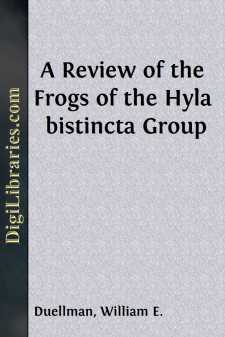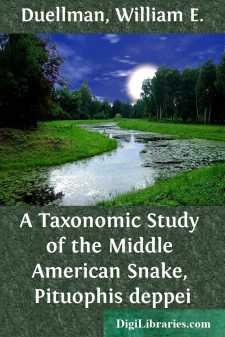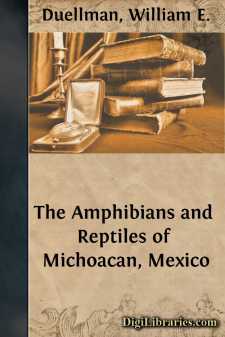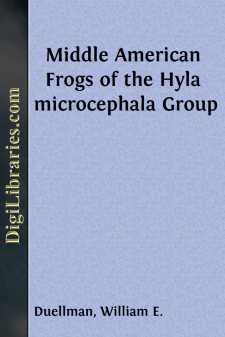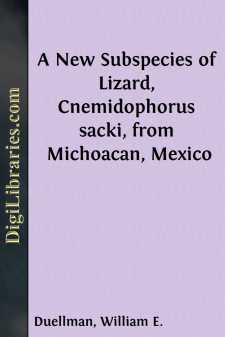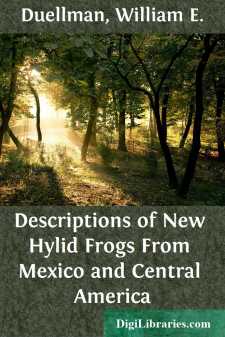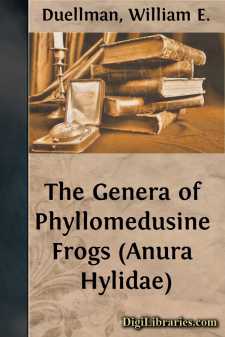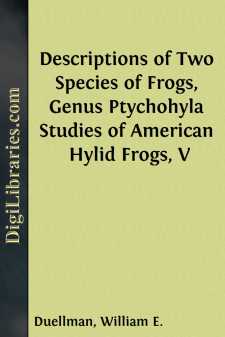Categories
- Antiques & Collectibles 13
- Architecture 36
- Art 48
- Bibles 22
- Biography & Autobiography 813
- Body, Mind & Spirit 142
- Business & Economics 28
- Children's Books 16
- Children's Fiction 13
- Computers 4
- Cooking 94
- Crafts & Hobbies 4
- Drama 346
- Education 46
- Family & Relationships 57
- Fiction 11829
- Games 19
- Gardening 17
- Health & Fitness 34
- History 1377
- House & Home 1
- Humor 147
- Juvenile Fiction 1873
- Juvenile Nonfiction 202
- Language Arts & Disciplines 88
- Law 16
- Literary Collections 686
- Literary Criticism 179
- Mathematics 13
- Medical 41
- Music 40
- Nature 179
- Non-Classifiable 1768
- Performing Arts 7
- Periodicals 1453
- Philosophy 64
- Photography 2
- Poetry 896
- Political Science 203
- Psychology 42
- Reference 154
- Religion 513
- Science 126
- Self-Help 84
- Social Science 81
- Sports & Recreation 34
- Study Aids 3
- Technology & Engineering 59
- Transportation 23
- Travel 463
- True Crime 29
A Review of the Frogs of the Hyla bistincta Group
Description:
Excerpt
THE HYLA BISTINCTA GROUP
The five species comprising the Hyla bistincta group are moderate-sized hylids having rather blunt heads and robust bodies. The fingers are long and have little webbing (Fig. 1). The skin of the dorsum is thick and glandular, but not tuberculate. An anal sheath is present. The skull is rather broad, flat, and solidly roofed. The ethmoid is broad, curved downward laterally, and solidly sutured to the frontoparietal. The nasals are broad, sutured for their entire width with the ethmoid, and broadly in contact medially. The premaxillaries are in contact medially; each has a long, flat nasal process. The quadratojugal is absent, and the maxillary tapers to a point posteriorly. There is no squamosal-maxillary connection. The maxillary and premaxillary teeth are rather long, bifid, and moderately spatulate. Some teeth on the premaxillary and anterior part of the maxillary are hooked. The vomerine teeth are spatulate and bifid. A broad, flat, ossified prepollex is present but does not project as a spine. The known tadpoles have ventral mouths, ââ¦â tooth-rows, two or more rows of labial papillae, and long tails with low fins.
Fig. 1.Palmar view of right hand of:a.—Hyla robertsorum(KU 57661),
b.—Hyla charadricola(KU 58414). × 3.
As thus defined the Hyla bistincta group can be distinguished from all other groups of Middle American frogs by the combination of absence of the quadratojugal, non-projecting prepollex, long fingers with little webbing, and stream-inhabiting tadpoles having ââ¦â tooth rows and two or more rows of labial papillae.
Possibly Hyla arborescandens and Hyla hazelae belong in this group. Because these species are somewhat different from the included species and because their tadpoles are as yet unknown, I have refrained from including these two species in the Hyla bistincta group. Taylor (1948:261) assigned Hyla proboscidea (= H. dalquesti) and (1949:272) Hyla cyclomaculata to this group, but because these two species have a quadratojugal and notably different tadpoles, they are excluded from the group.
Frogs of the genus Plectrohyla closely resemble species in the Hyla bistincta group but differ principally in having a projecting prepollex. In the highlands of Costa Rica a group of species, of which Hyla moesta is best known, resembles species in the Hyla bistincta group. At present insufficient information is available on the Costa Rican species to determine their affinities.
Analysis of Characters
The characters used in the systematic study of the frogs in this group are those usually employed in anuran systematics. Of the various measurements and proportions, the snout-vent length and the relative size of the tympanum to the eye apparently are of more taxonomic importance than the others (Table 1). In all of the species the tympanum is at least partially covered by a heavy, dermal supratympanic fold, and in some specimens of H. pachyderma the tympanum is completely obscured. In two species (H. bistincta and H. charadricola) the snout is square, whereas in the other species it is round.
The fingers are long and slender in H. crassa, pachyderma, and robertsorum and somewhat shorter with more webbing in H. bistincta and charadricola. Breeding males of Hyla pachyderma have moderately large nuptial spines; the other species have small spines, except H. charadricola in which spines apparently are absent. A well-defined thoracic fold is present in H. pachyderma, and a weak fold is present in H. robertsorum; the other species lack folds. In all species there is an anal sheath; this sheath is longest in H. bistincta, in which the anal opening is directed ventrally at the level of the lower edge of the thighs.
Table 1.—Comparison of Certain Measurements and Proportions in the Species of the Hyla bistincta Group. (Data From Adult Males; Means Are Given in Parentheses Below the Ranges.)
H. bistincta3843.0-53.8(46.3)0.47-0.52
(0.49)0.32-0.37
(0.34)0.35-0.48
(0.42)H. charadricola1035.3-44.4
(40.4)0.50-0.54
(0.52)0.31-0.33
(0.32)0.30-0.37
(0.34)H. robertsorum2639.9-47.9
(43.1)0.48-0.51
(0.49)0.30-0.36
(0.32)0.36-0.47
(0.41)H. pachyderma139.90.530.32......


